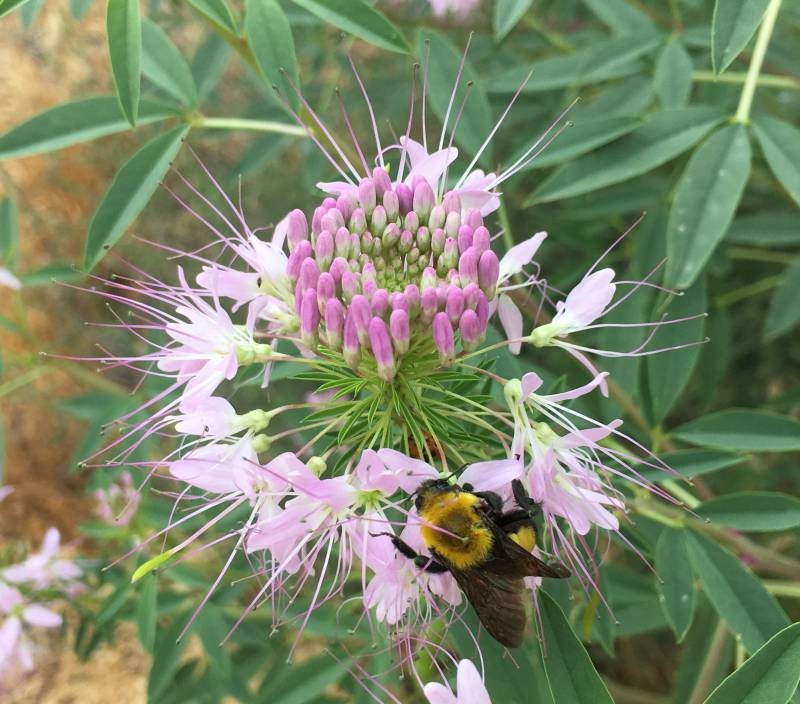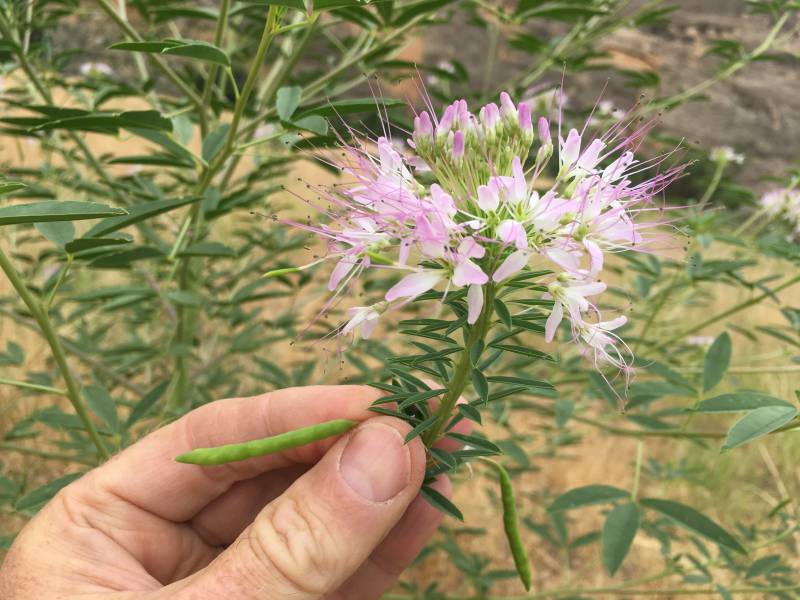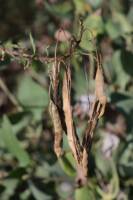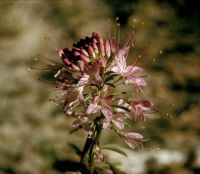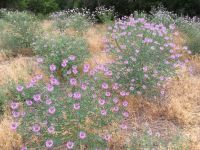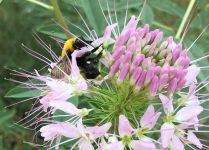Distribution: Occurring east of the Cascades crest in Washington; British Columbia to California, east to Ontario, the Great Lakes region, and Ohio.
Habitat: Sagebrush deserts and Ponderosa pine forest openings.
Flowers: June-August
Origin: Native
Growth Duration: Annual
Conservation Status: Not of concern
Freely-branched annual 2.5-10 dm. tall, usually glabrous or with a few long, soft hairs.
Leaves alternate, trifoliate, the leaflets linear-elliptic to narrowly lanceolate, 1.5-7 cm. long, exceeding the petioles,
Inflorescence of bracteate racemes, greatly elongate in fruit, the lowest of the flowers axillary to scarcely reduced leaves; pedicles 7-15 mm. long, calyx 2.5-3 mm. long, the 4 short, acute lobes not much longer than the tube; petals 4, reddish-purple to pale pink or white, ovate-lanceolate, 8-11 mm. long, narrowed abruptly to a claw 1 mm. long; stamens 6, the filaments twice the length of the petals, pink.
Capsule nearly terete, spreading or drooping, 3-6 cm. long, with a stipe 10-20 mm. long.
Publication: Phytotaxa 205(3): 140. 2015.
Peritoma serrulata (Pursh) DC.
PNW Herbaria: Specimen records of Cleomella serrulata in the Consortium of Pacific Northwest Herbaria database
WA Flora Checklist: Cleomella serrulata checklist entry
OregonFlora: Cleomella serrulata information
E-Flora BC: Cleomella serrulata atlas page
CalPhotos: Cleomella serrulata photos

